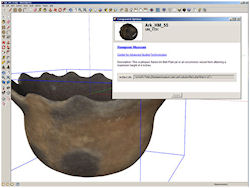
Figure 14: Hampson vessel in Google 3D Warehouse with citation information.
It is axiomatic that one of the central values of any digital object is the ease with which it may be reused or repurposed. In fact '[m]uch of the promise of the information age, however, lies in the ability to reuse, repurpose, combine and build complex digital objects' (Rehberger et al. 2006, 39). This is particularly true for heritage objects. We illustrate two different ways in which the digital objects developed in the Hampson project can be repurposed as an exemplar of such efforts and briefly discuss the implications of such reuse.
Google's SketchUp is a popular software solution and is increasingly being used for many heritage visualisation and analysis applications (Koller et al. 2009; De Boer et al. 2010). The digital objects in the Hampson and Amarna Virtual Museums can be easily reused in research and interpretative projects using this software. To display or use these objects in Google SketchUp, an import script was needed. With the large user base for SketchUp many external scripts have been created and are available freely from various sites. The import script only requires a free registration to SketchUcation. After downloading the .rb script (all SketchUp scripts are written in the Ruby programming language), it is necessary to place the script in the plugin folder of the SketchUp program. This is followed by then selecting plugins > OBJ Importer where there are three options, IMPORT OBJ (with > textures), IMPORT OBJ (no materials) or IMPORT OBJ (as mesh). The IMPORT OBJ (with textures) option is the correct one for the Hampson and Amarna virtual objects. Because of the complexity of the objects, even the low-resolution objects may take a minute or two to import. It is also necessary to designate the units (mm). This will make it possible to measure and otherwise manipulate the objects in proper scale units. After import, a dialogue box will ask to flip OBJ YZ and this should be done. The import script can be used in the free or professional versions of SketchUp.
Google and the SketchUp Community have developed the SketchUp 3D Warehouse and it is simple to place objects into it where they can then be widely reused. This is yet another case where the structure of URIs and a formal citation system are essential so that any future users of the object can provide proper provenance/credit. Figure 14 illustrates the object and citation in the 3D warehouse.
The comments facility has now been turned off.
© Internet Archaeology/Author(s)
University of York legal statements | Terms and Conditions
| File last updated: Tue Jun 28 2011